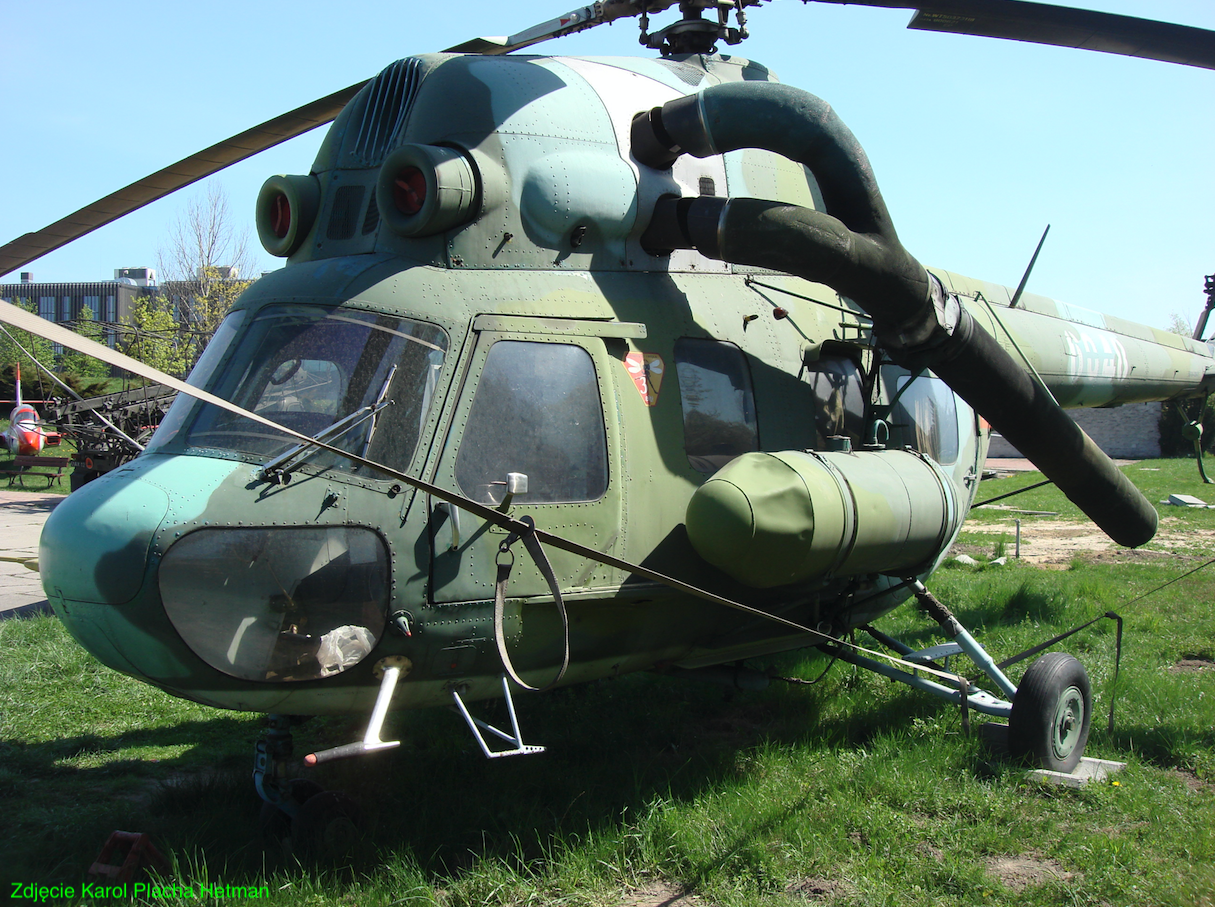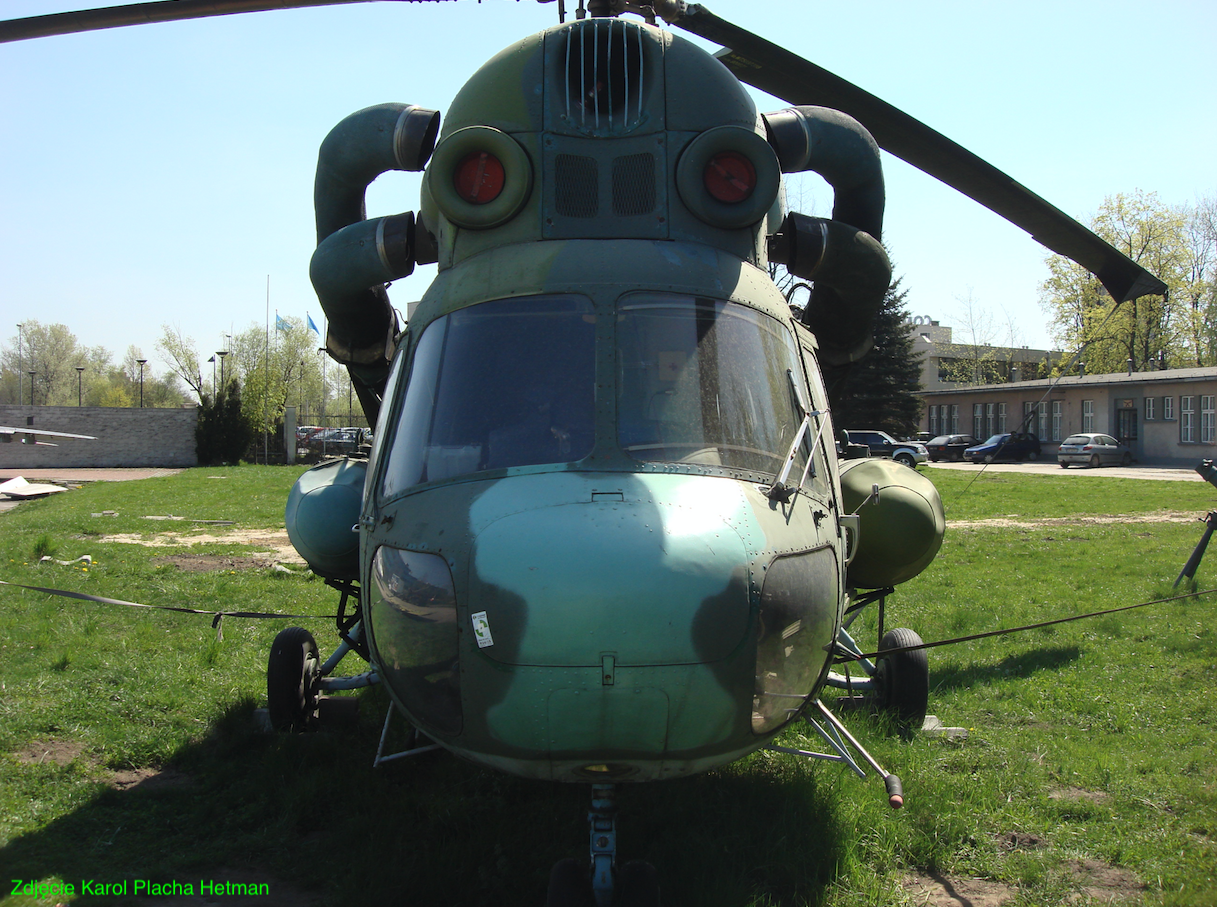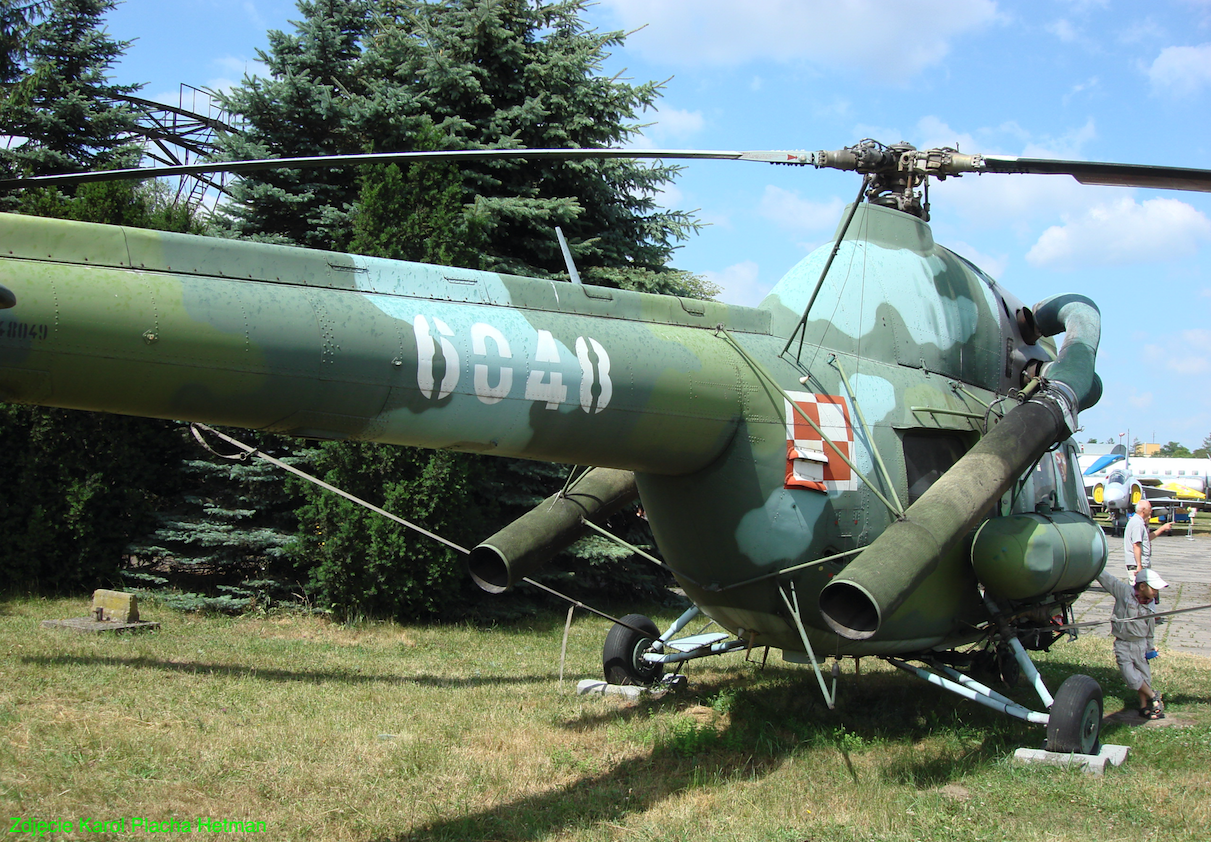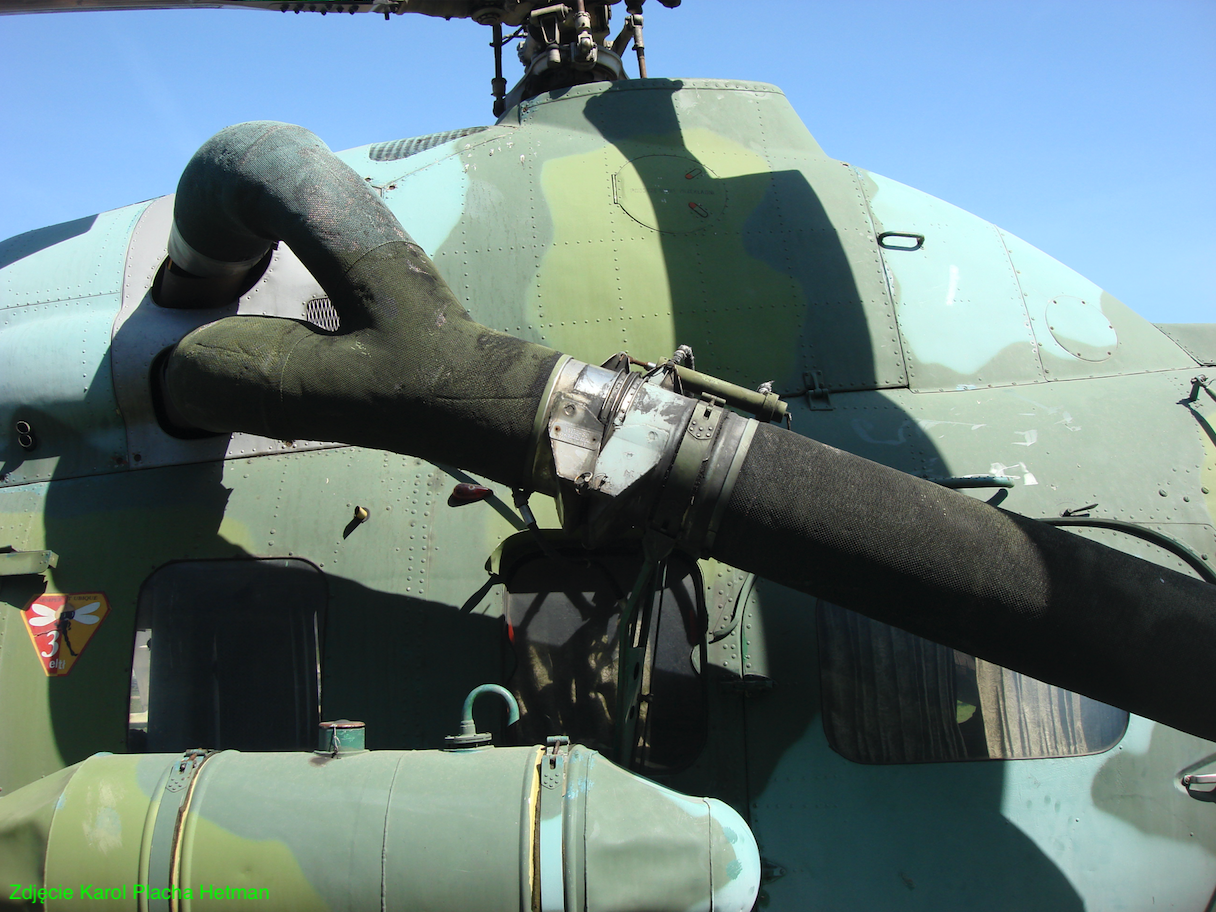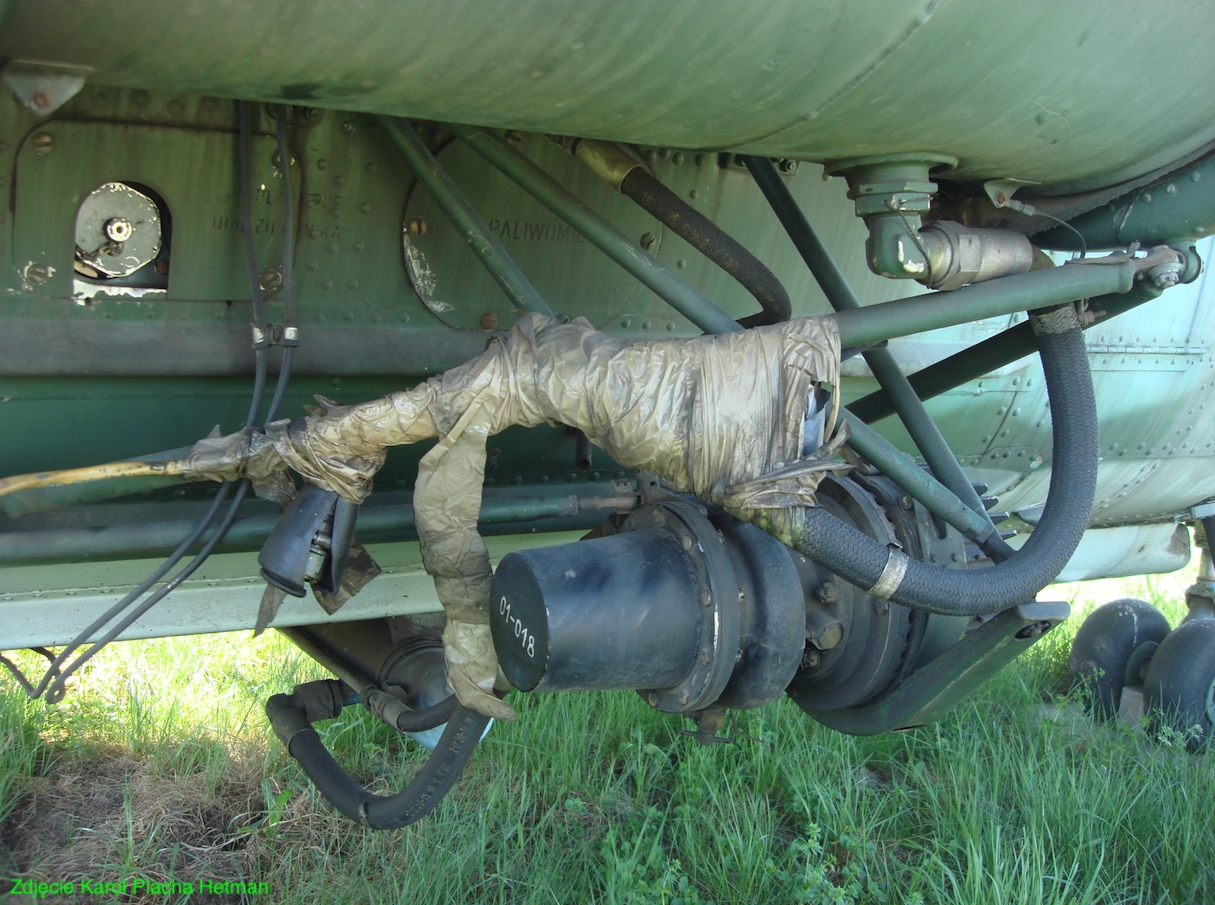Kraków 04-05-2024r.
WSK PZL Świdnik Mi-2 Ch Chekla.
The history of the PZL Mi-2.
The Mil Mi-2 helicopter is one of the most recognizable helicopters in the world. In the NATO code, the Mi-2 was named Hoplite. (A hoplite is a heavily armed infantry soldier in ancient Greece from the 7th to the 4th century BC). The helicopter also received several dialect names, including the most popular one: Kettle. It was designed at CCCP in the office of Mikhail Mil. The helicopter turned out to be successful and the decision was made to mass produce it. However, the CCCP’s economy was inefficient and its munitions plants were burdened with more urgent production. Therefore, it was decided to locate the production of the Mi-2 at WSK PZL Świdnik. The decision was supported by Świdnik’s experience gained in the production of SM-1 and SM-2 helicopters. There was also another advantage for the communists; It was possible to significantly limit Polish research and development work on domestic structures. In effect; each Mi-2 was built in Świdnik. In 1963, final decisions were made and the Mi-2 helicopter license was purchased. The Muscovites did not agree to give the machine the name SM-3, which was intended for it in Poland.
In 1964, the production of Mi-2 helicopters began at WSK PZL Świdnik using parts supplied from CCCP. In 1965, the first fully Polish Mi-2 rolled off the production line. About 5,400 PZL Mi-2 helicopters were built at WSK PZL Świdnik. By 1985, approximately 4,500 units were built, and by 1988, approximately 5,100 units were built.
PZL Mi-2 Ch Chekla.
An interesting version of the PZL Mi-2 helicopter is the Mi-2 Ch Chekla helicopter, used for setting up a smoke screen and identifying chemical contamination. Work on this version began in 1981. This helicopter is distinctive due to the interesting equipment installed. The helicopter proved effective and was able to quickly set up a smoke screen. The problem is that in the 1980s, mobile radar stations were widely introduced in divisions, which enable attacks to be carried out at night, in fog and even in smoke. And individual soldiers increasingly used night vision goggles and goggles. Therefore, the goal was not achieved. However, we must not forget that this type of installations may in the future be used by terrorists to cause contamination, i.e. for forbidden chemical warfare. Therefore, several versions for contamination recognition have been developed based on the Mi-2. Their combat value depends on the equipment installed on board the helicopter and the means of communication to quickly transmit the collected information.
The PZL Mi-2 helicopter with board number 6048 is a copy of the chemical reconnaissance and smoke screen version. The helicopter is equipped with the WZD-80 system, which uses engine exhaust gases to generate smoke, and equipment for detecting contamination. PZL Mi-2 nb 6048 served in the 56th Combat Helicopter Regiment and in the 3rd Liaison and Transport Aviation Squadron. After the end of service in 2005, the helicopter was donated to the Polish Aviation Museum in Krakow.
Data T-T Mi-2:
Main rotor diameter 14.56 m. Total length 17.42 m. Fuselage length 11.94 m. Fuselage width 3.25 m. Height without tail rotor 3.75 m. Empty weight 2,375 kg. Take-off weight 3,550 kg. Payload mass: 700 kg. Fuel in internal tanks 600 liters. Maximum speed 210 km/h. Cruising speed 190 km/h. Vertical lift 4.6 m/s. Ceiling 4,000 m. Ceiling in hovering without ground influence 900 m. Ceiling in hovering with ground influence 1,600 m. Range 300 km. Maximum range 600 km.
Written by Karol Placha Hetman

